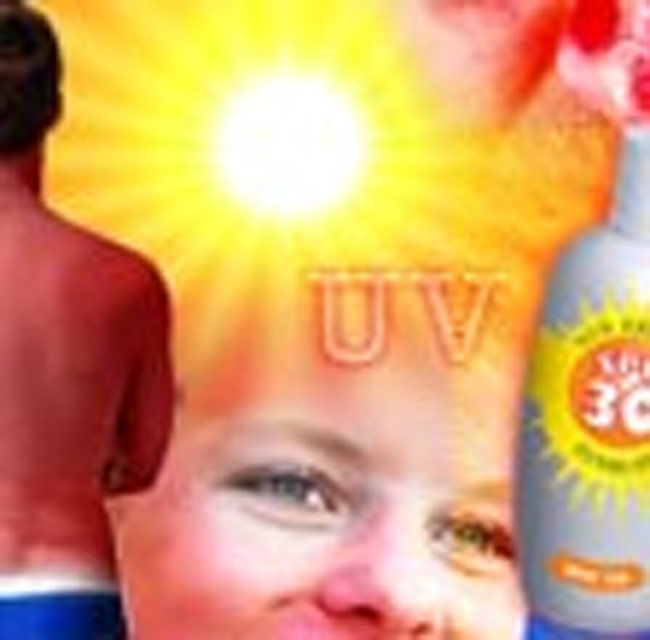Risk Factors: Little Known Facts about Skin Cancer

The sun provides the energy for every single thing we eat, touch and enjoy. But its radiation is also deadly, especially for men.
Men fry more than women. Men over 40 have the highest exposure to the sun's harmful rays—ultraviolet radiation, according to the Skin Cancer Foundation.
While men and women get about equal doses of sun from recreational exposure, which includes biking, walking, gardening and beach-going, "Men are more likely to get occupational sun exposure than women," says Alan Geller of the Boston University School of Medicine.
And this shows up in the cancer stats—about 60 percent of people diagnosed with melanoma, the most deadly form of skin cancer, are white men over 50. [You and the Sun: 10 Burning Questions]
Complex picture
The story isn't that simple though. Melanoma is the most common type of cancer in women between the ages of 25 and 29, according to the New York Presbyterian Hospital/Weill Cornell Medical Center.
And in coming years, men's and women's skin cancer rates could equalize overall as the distinctions between women's and men's activities continue to vanish, Geller says.
Sign up for the Live Science daily newsletter now
Get the world’s most fascinating discoveries delivered straight to your inbox.
More than 1 million new cases of skin cancer are diagnosed each year, according to the American Academy of Dermatology, which calls skin cancer an unrecognized epidemic. A bit more than 10 percent of these are melanoma, which kills some 8,000 U.S. residents a year.
One in five Americans will get a skin cancer diagnosis in their lifetime; that figure is one in three for Caucasians in the United States, according to the Skin Cancer Foundation.
Melanoma is less common in African-Americans, Latinos, and Asians, but it is deadlier for these populations because it is more likely to develop undetected.
The other two most common forms of skin cancer, basal carcinoma and squamous cell carcinoma, are more common and less deadly for all, but also require vigilance and preventive measures.
The effect of advertising
Men take sun protection less seriously than do women.
Across almost all ages, women are about twice as likely to use sunscreen as men, Geller told LiveScience.
"There are a myriad of reasons, including the fact that, in general, women are more prevention-oriented than men," Geller said. "But also, women are more accustomed to using lotions, creams and moisturizers than men."
Advertising also could play a part, Geller found. He headed up a study of skin care advertising in 579 issues of 24 top U.S. magazines published from 1997 to 2002. More than 75 percent of all sun-protection products ads were published in women's magazines, with only 2 percent found in men's magazines.
"We know that men know much less about sun protection than women," Geller said. The study recently was published in the American Journal of Health Promotion.
He calls for more detailed advertisements that reach men and other potentially higher risk groups such as children and outdoor enthusiasts.
Skin protection secrets
Many people nowadays know the sun-skin basics—wear SPF 30 sunscreen if you'll be in the sun for more than 20 minutes; reapply after you swim or sweat or every 2 hours even if the sunscreen is water resistant; wear hats and even high-tech clothing, or at least tight weaves, that shield more sunlight.
Like most things, moderation is wise. The sun should only be enjoyed in small doses in order to minimize exposure to UV radiation, which plays a part in basal carcinoma, squamous cell carcinoma and melanoma.
A lot of people remain ignorant of the sun-skin details. For instance, sunscreen should be applied before you go outside so your skin absorbs the product and activates the SPF chemistry.
SPF 30, not 15, has become the recommended minimum, dermatologist Christopher Harmon, who practices in Birmingham Alabama, recommends you find sunscreen with zinc, titanium dioxide, avobenzone and/or Helioplex as the active ingredients. These are especially effective sun blocks.
Many people treat sunscreen like a precious commodity, smearing on the thinnest layer after arriving at the beach. A shot glass-full is the right amount for each full-body application.
Knowing vs. doing
And even though most of us know we should avoid the sun, less than a third of all adults and children routinely use sun protection. "Most people don't see the true benefit of using sunscreens, therefore they are not motivated to apply them on a daily basis," Harmon said in an email interview.
Here is some more motivation. Ninety percent of all skin cancers are caused by sun exposure, according to the Skin Cancer Foundation. Some experts say to think of the sun's rays as little daggers.
Some people justify skin exposure to help the body produce Vitamin D, but that can be obtained more safely from food or vitamin supplements than from sunlight, experts say. Milk and orange juice typically are fortified with Vitamin D, and salmon, tuna, sardines, eggs, beef liver and Swiss cheese naturally have a lot of D in them.
This article is part of LiveScience.com's weekly Mystery Monday series.
Related Stories
- You and the Sun: 10 Burning Questions
- Scientists Clueless over Sun's Effect on Earth
- Thinning Arctic Ozone Could Pose Health Threat
More to Explore
- Body Quiz: The Parts List
- Body Quiz: How the Parts Fit
- Body Quiz: What the Parts Do
- The Pain Truth: How and Why We Hurt
- Top 10 Mysterious Diseases
- How We Smell
- Why We Lie
Robin Lloyd was a senior editor at Space.com and Live Science from 2007 to 2009. She holds a B.A. degree in sociology from Smith College and a Ph.D. and M.A. degree in sociology from the University of California at Santa Barbara. She is currently a freelance science writer based in New York City and a contributing editor at Scientific American, as well as an adjunct professor at New York University's Science, Health and Environmental Reporting Program.










